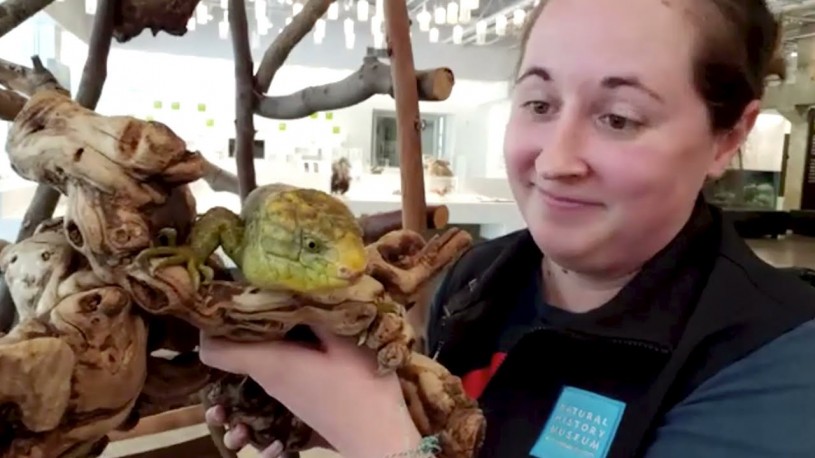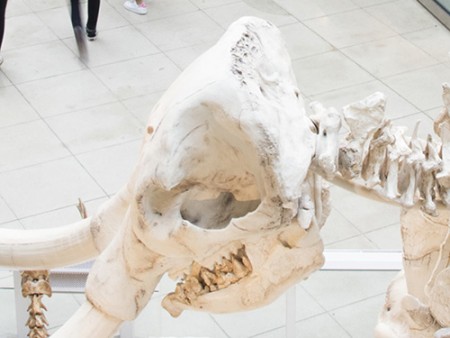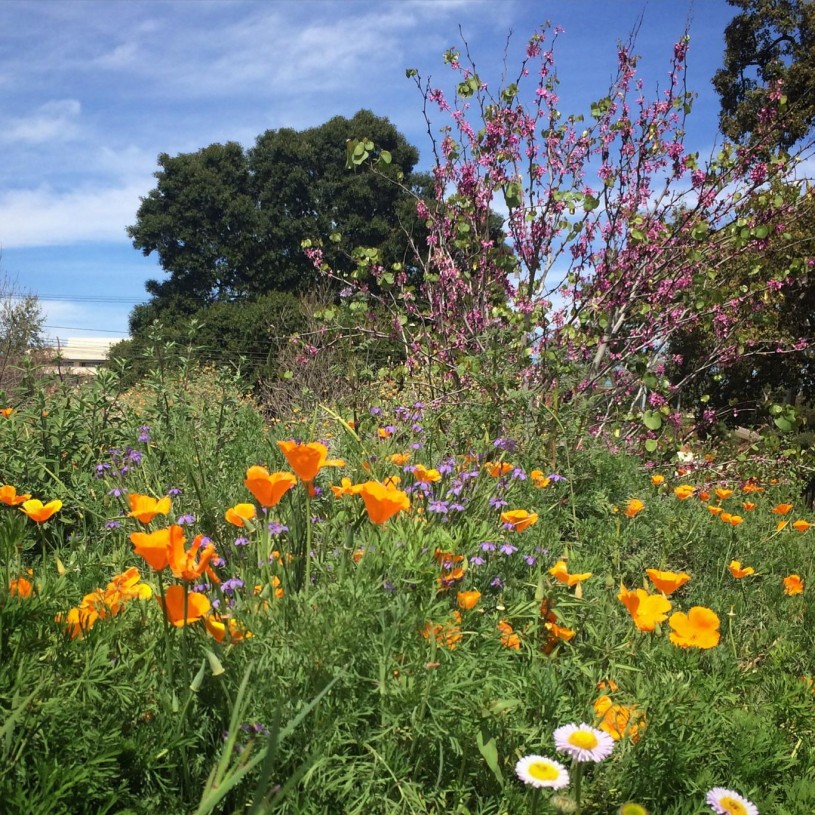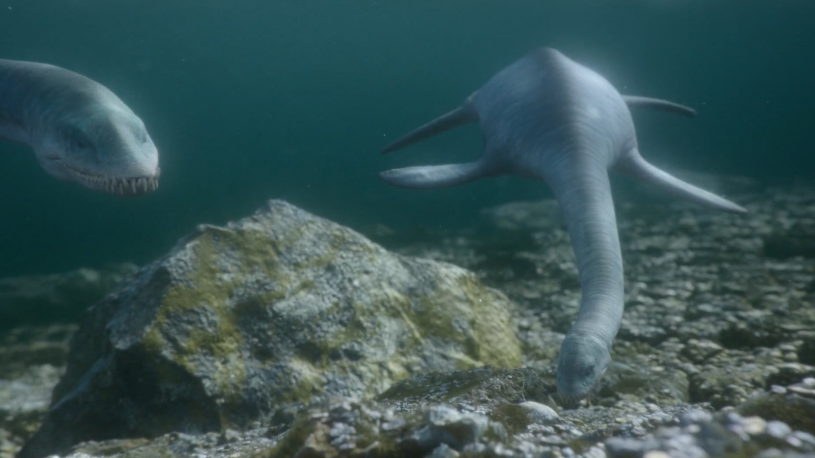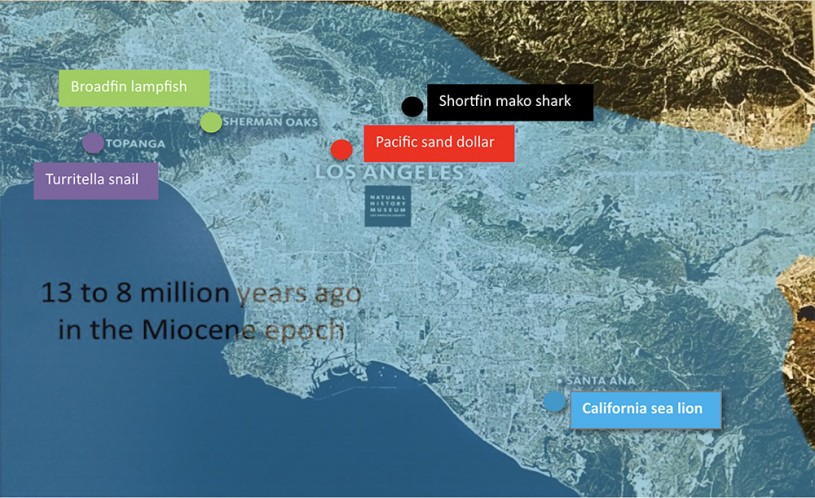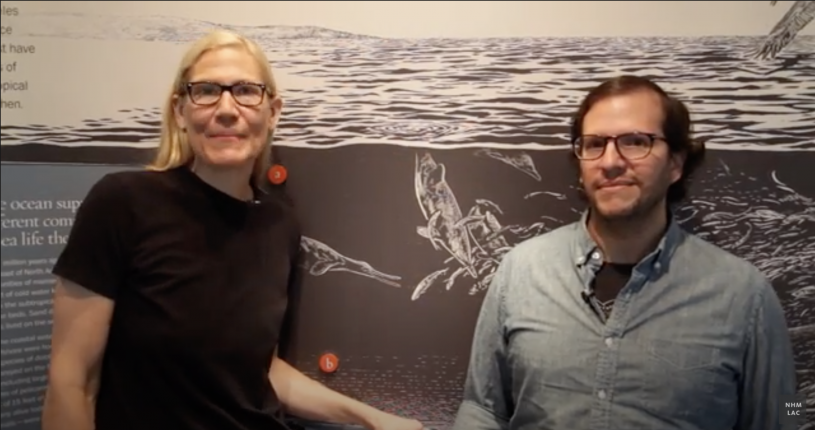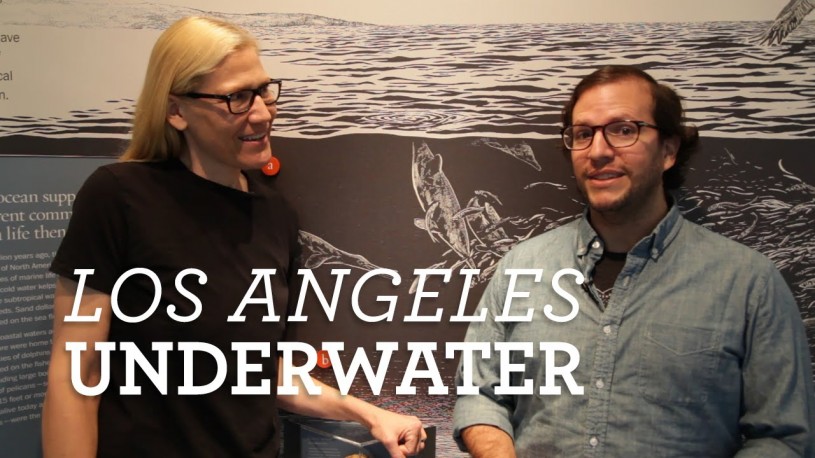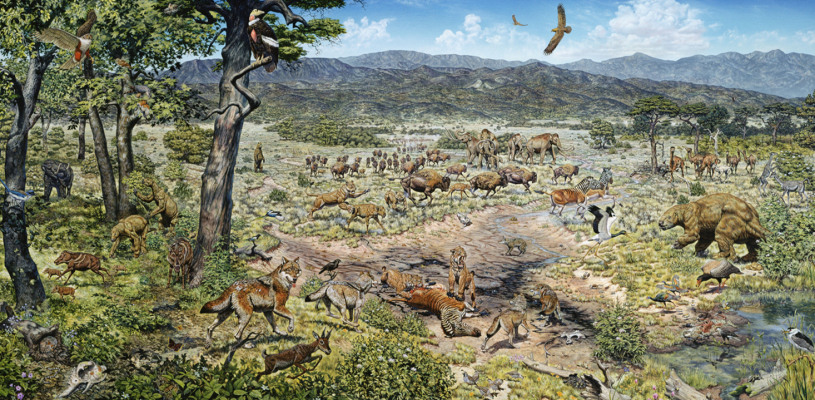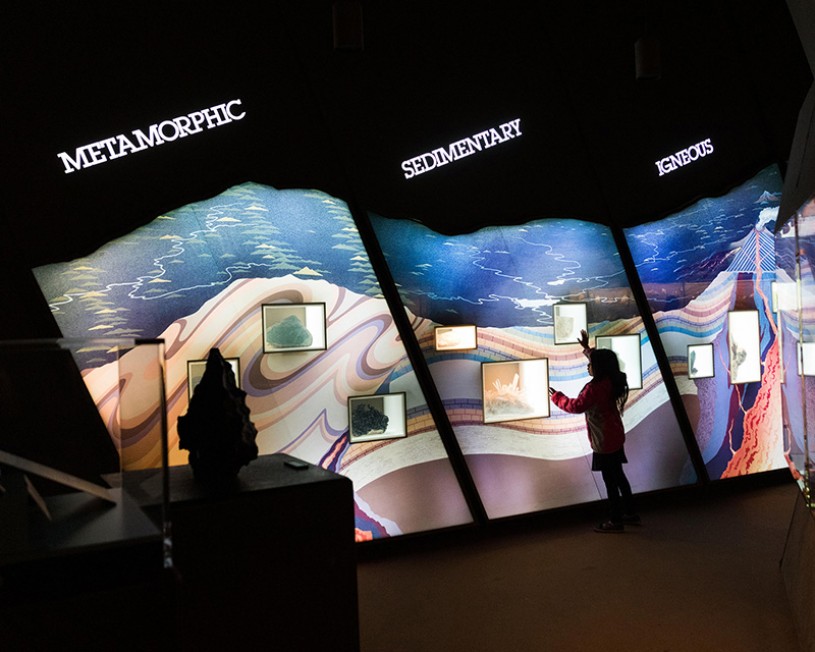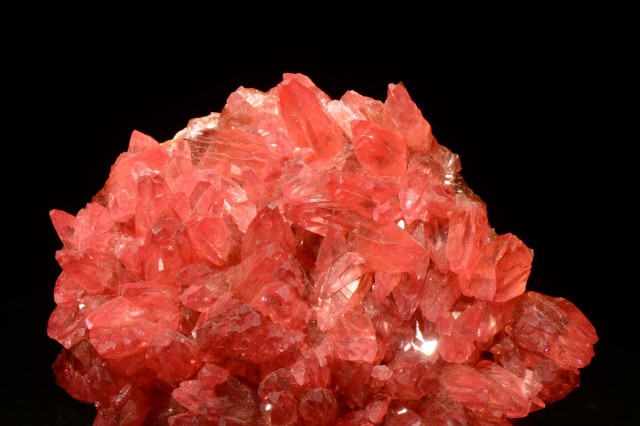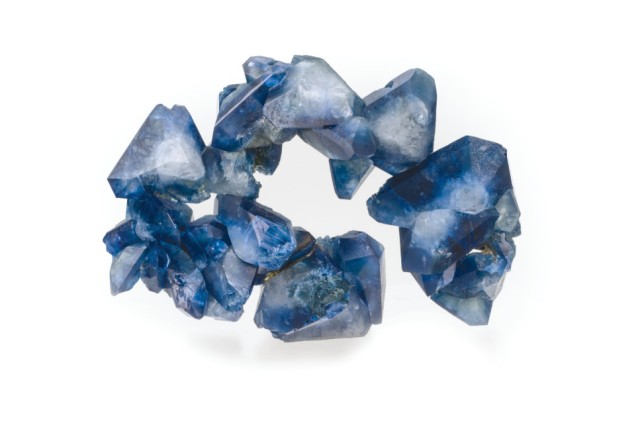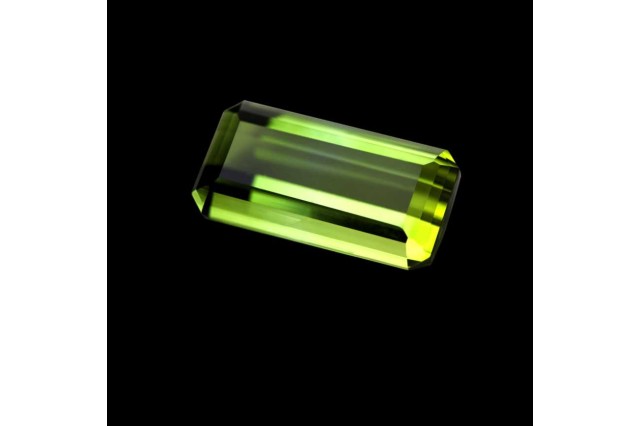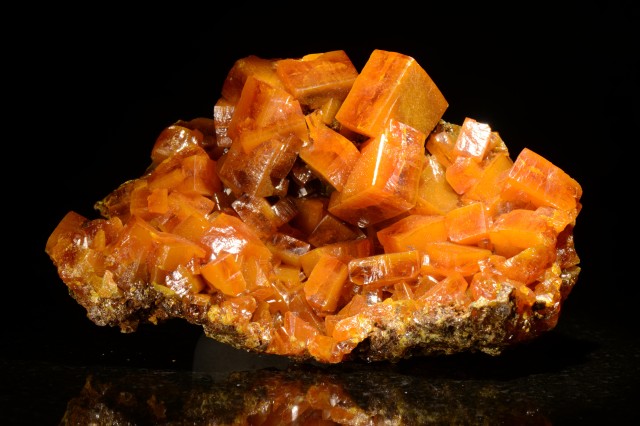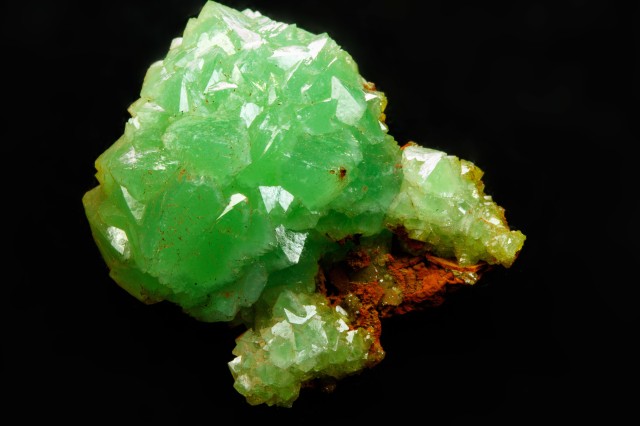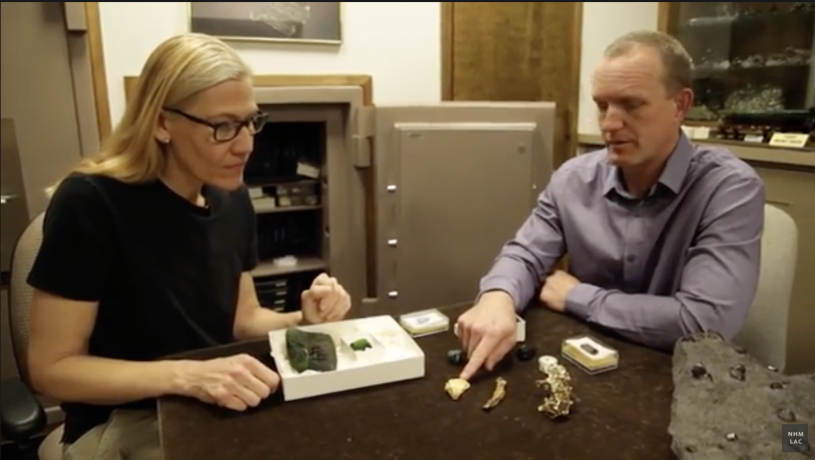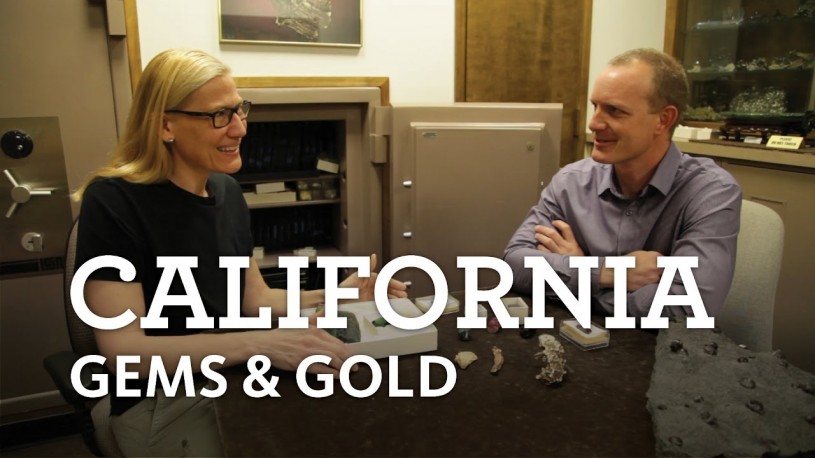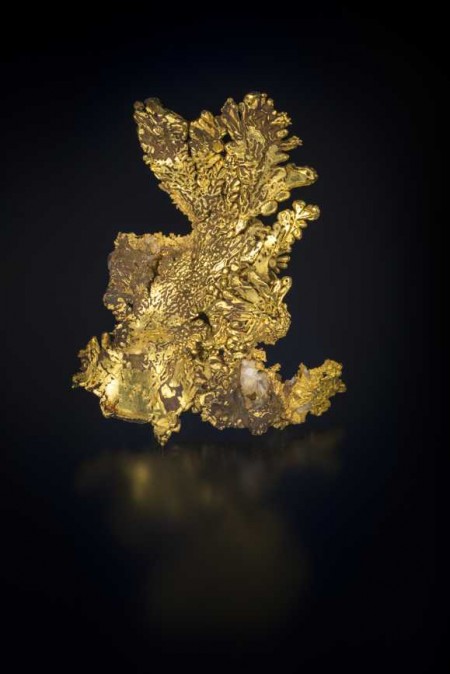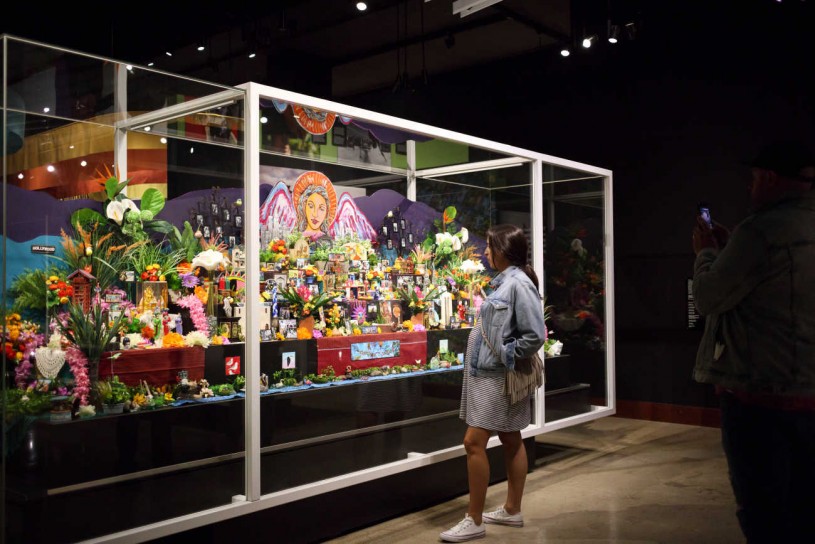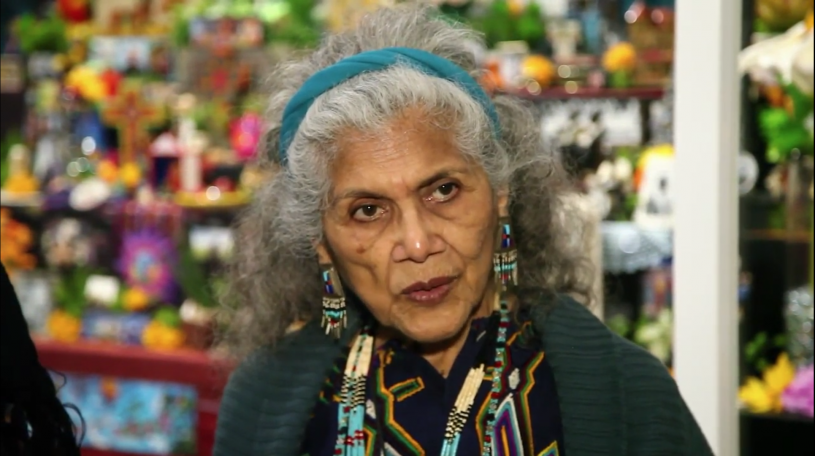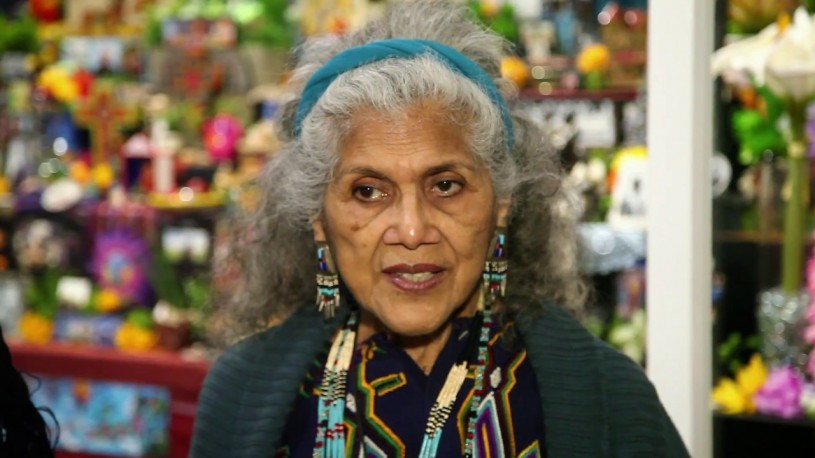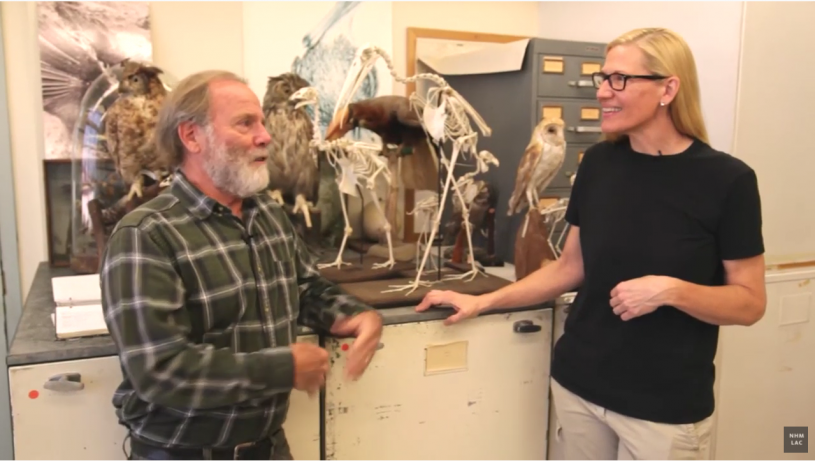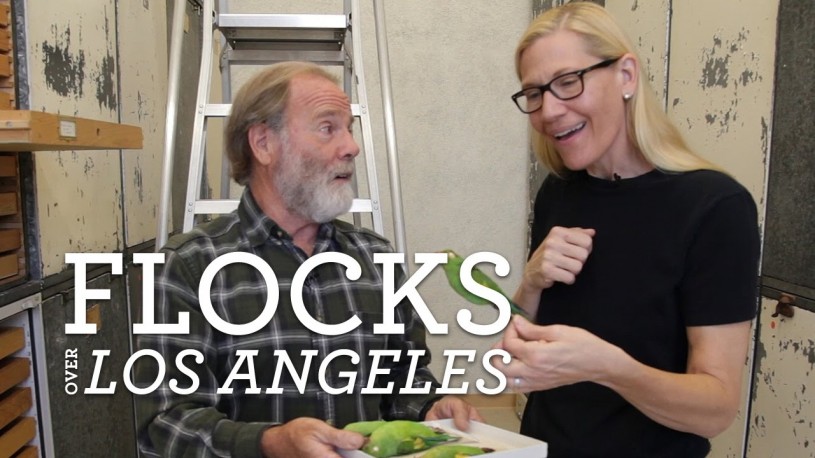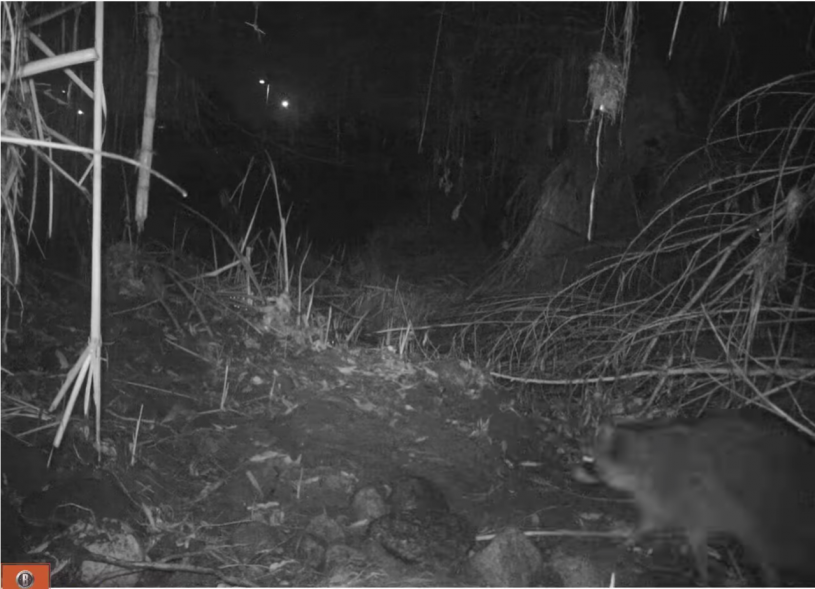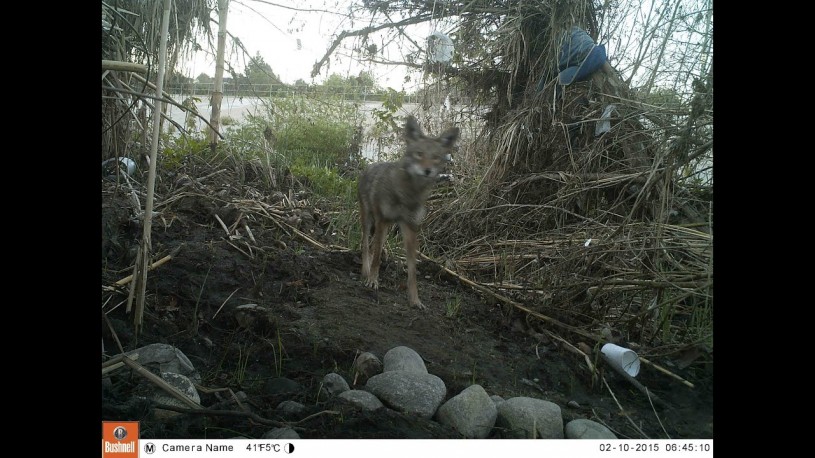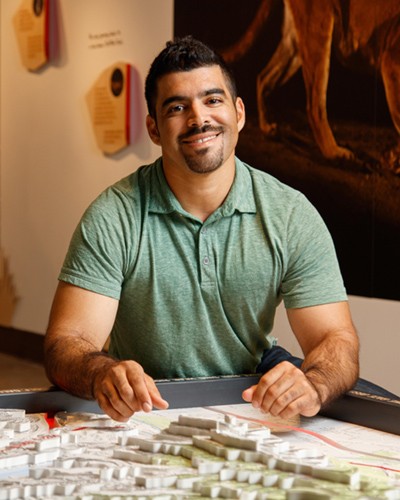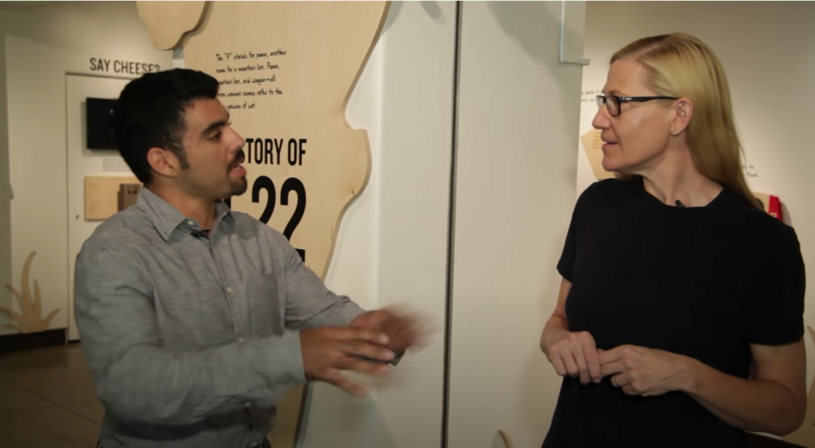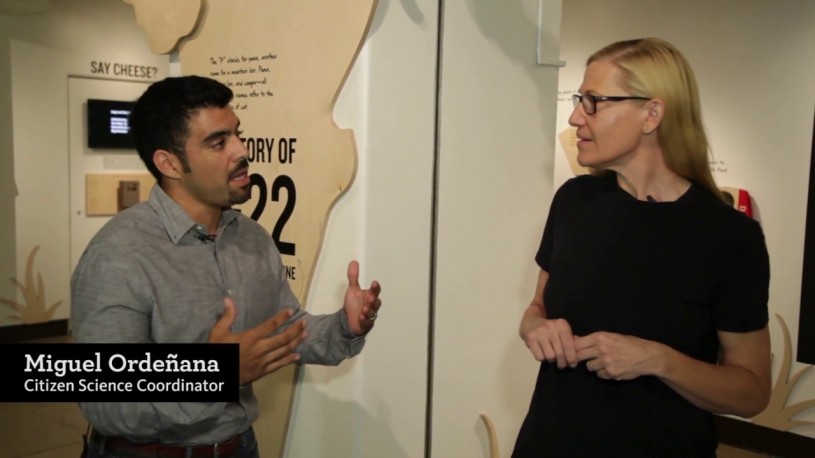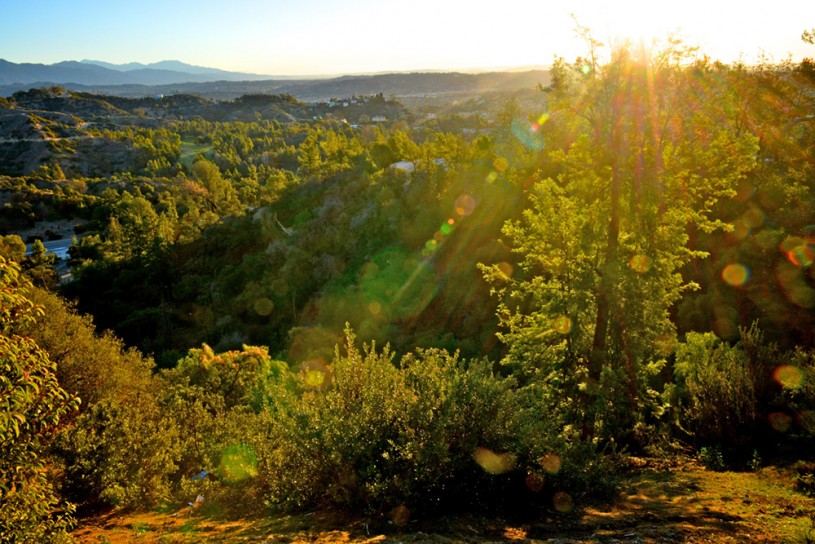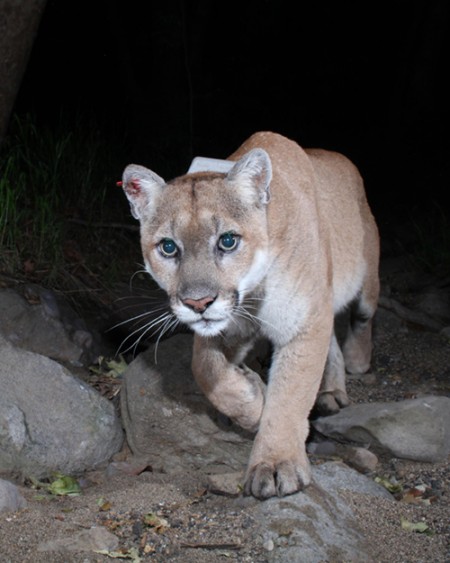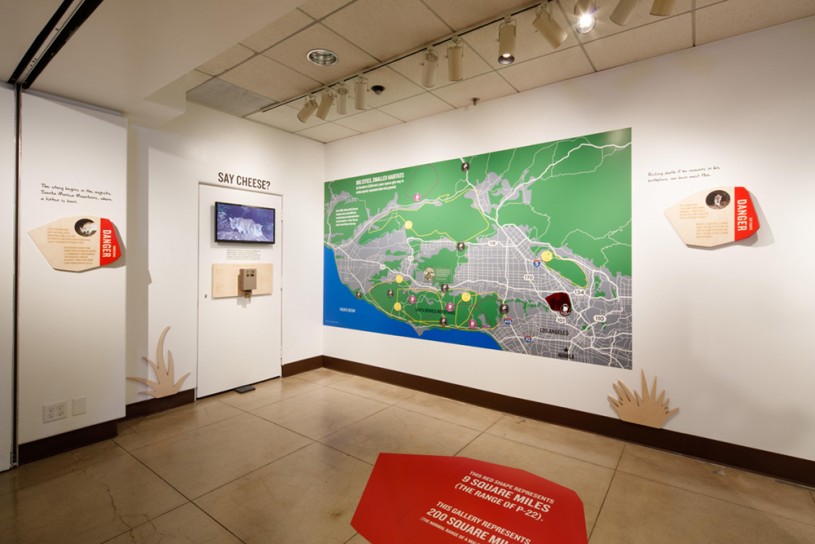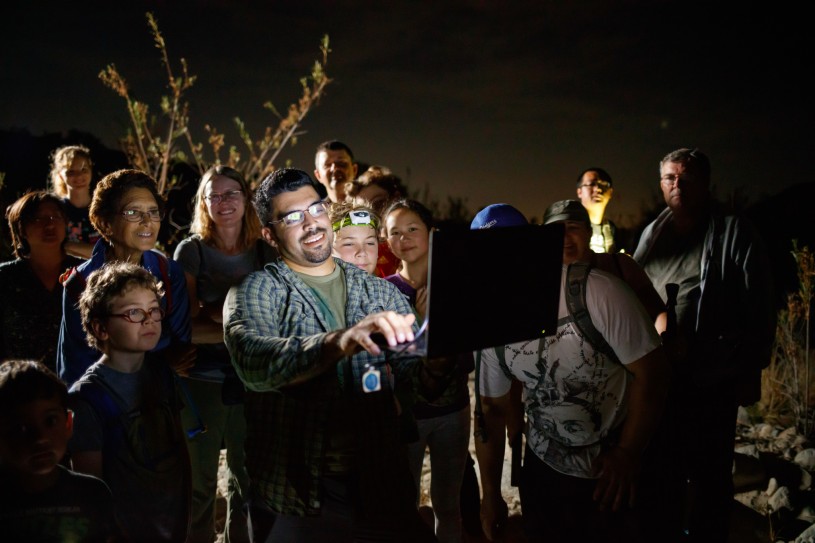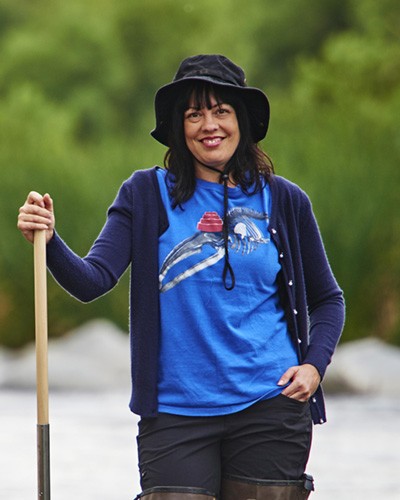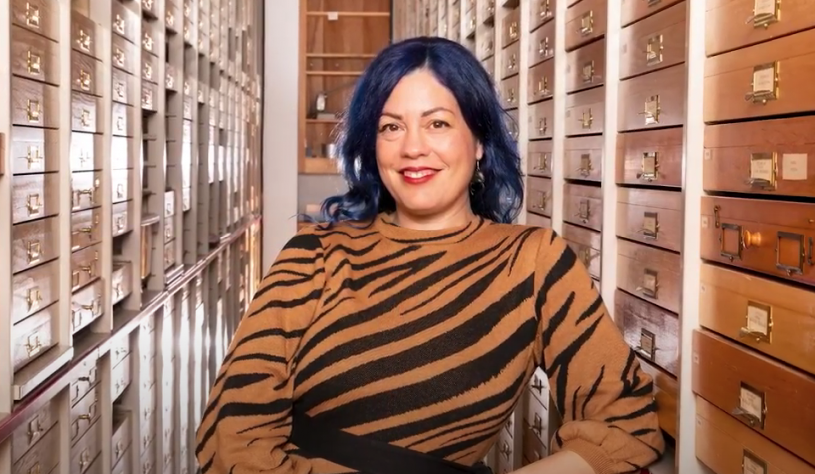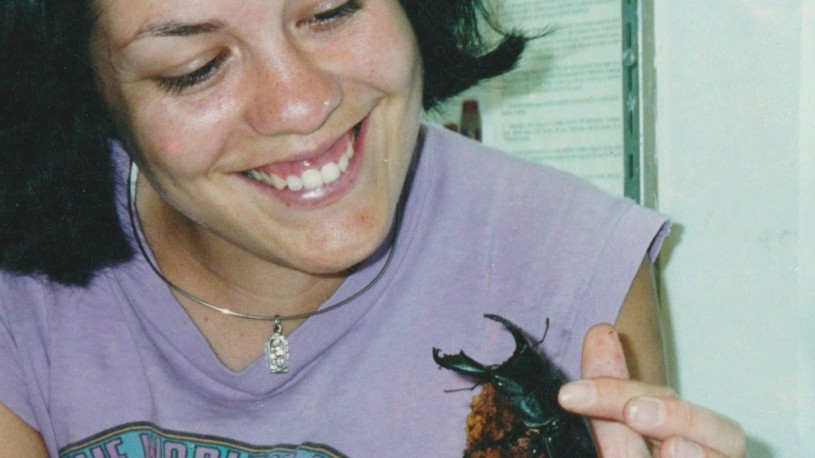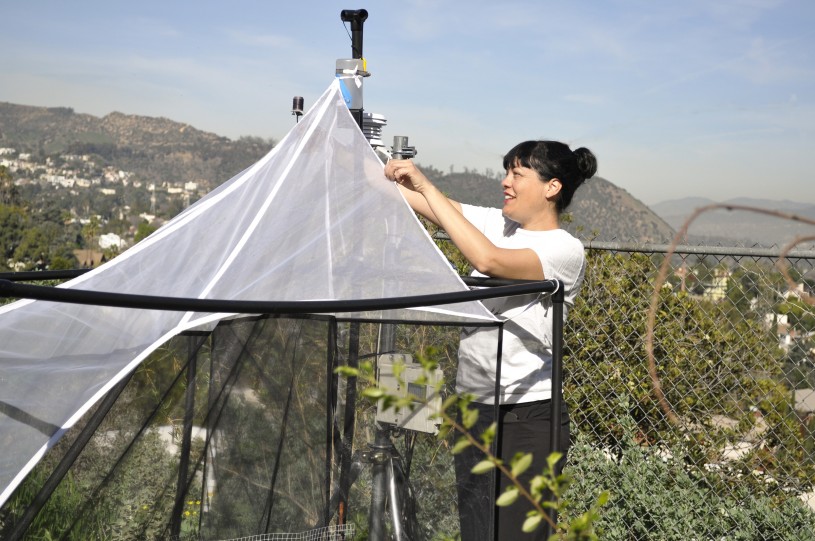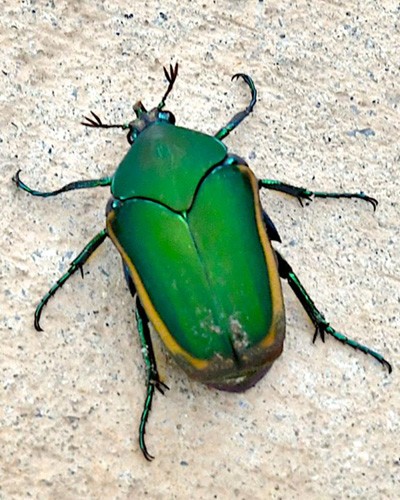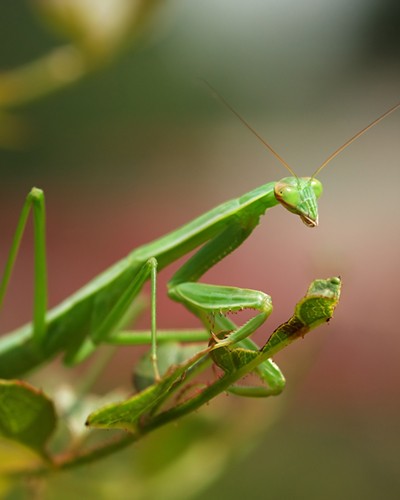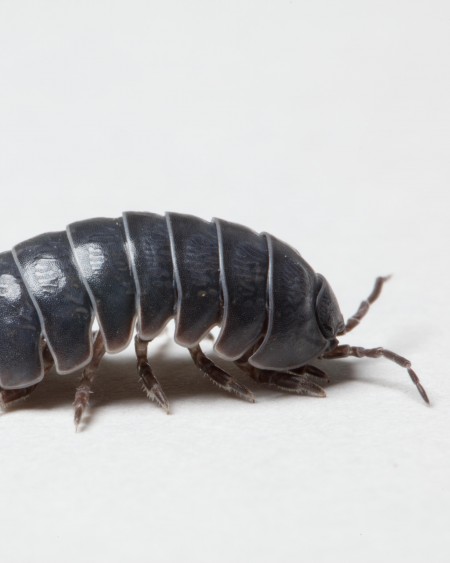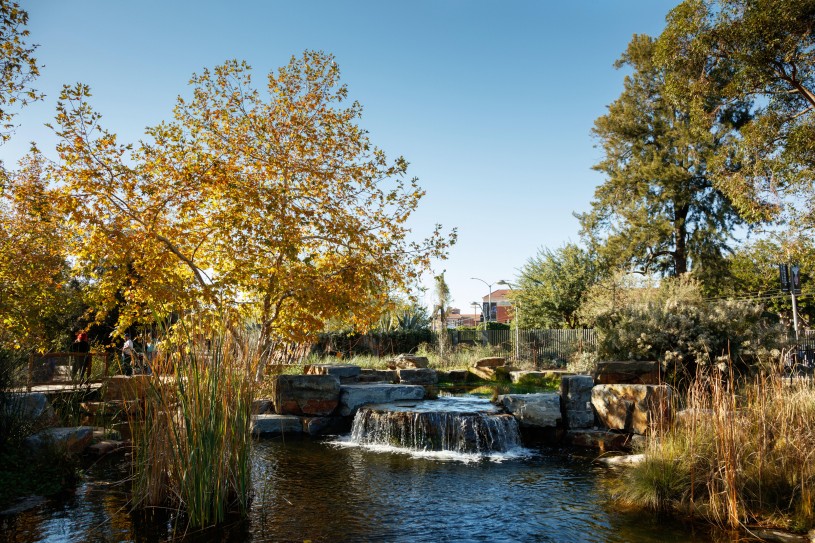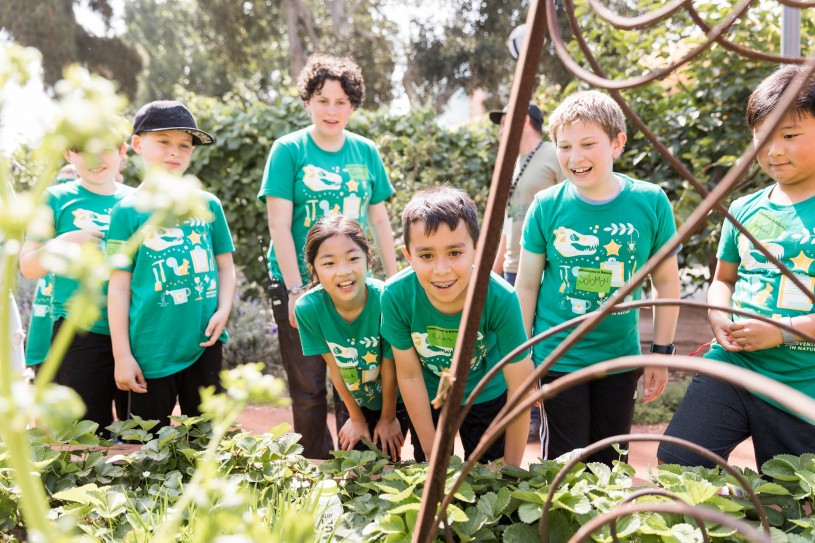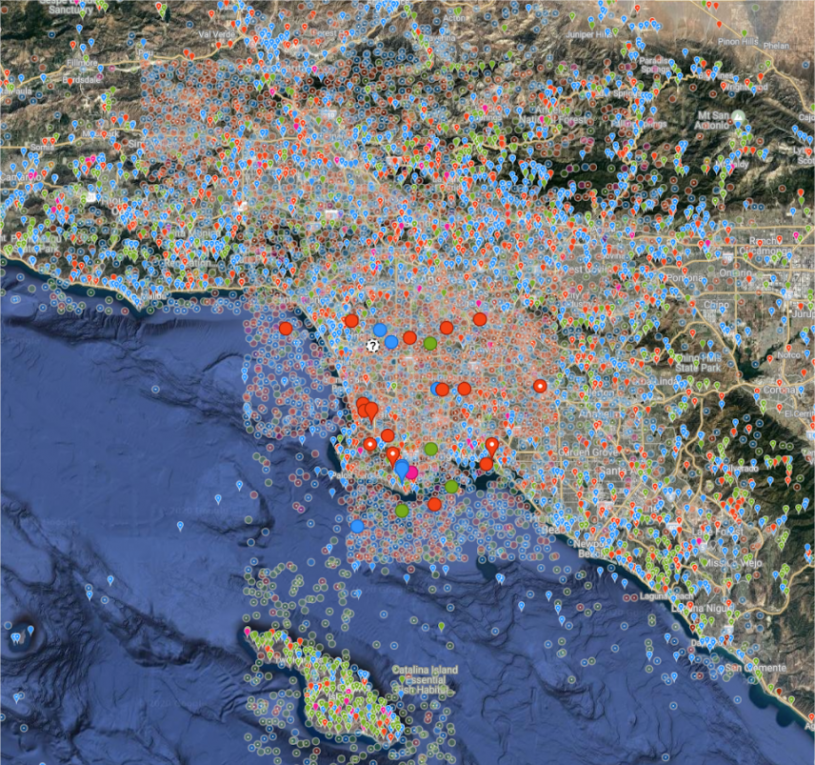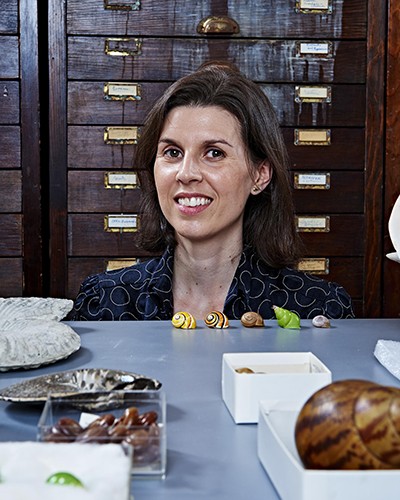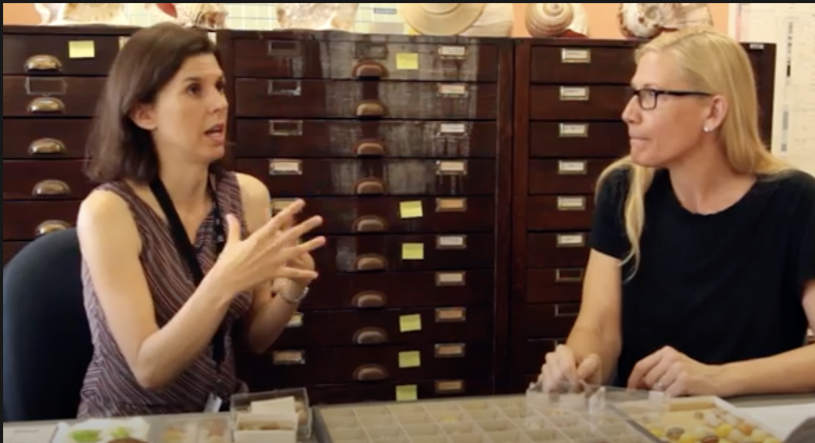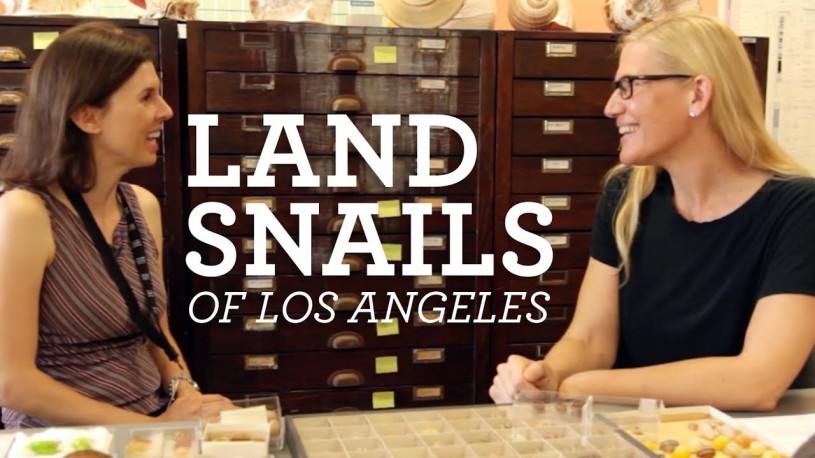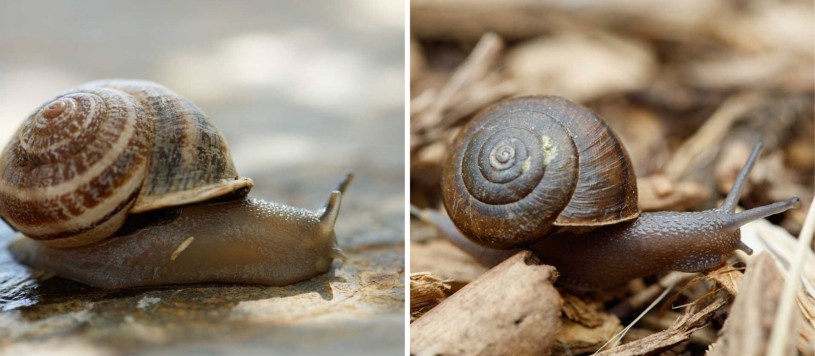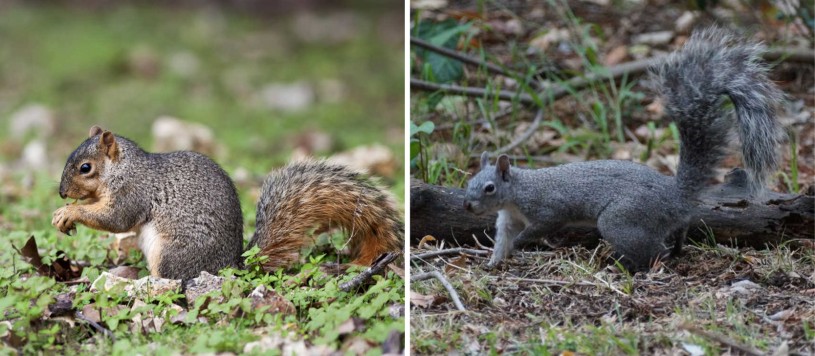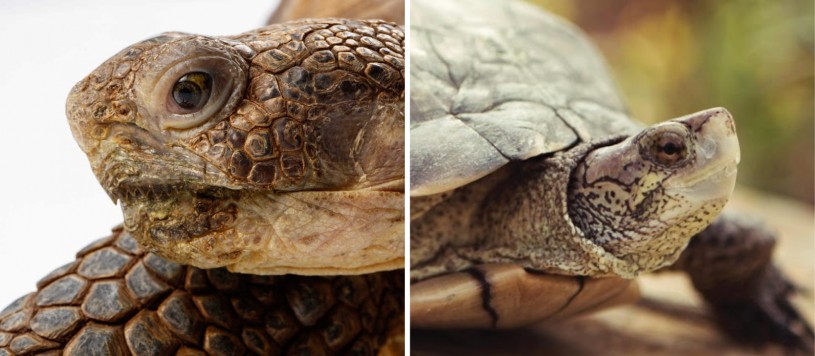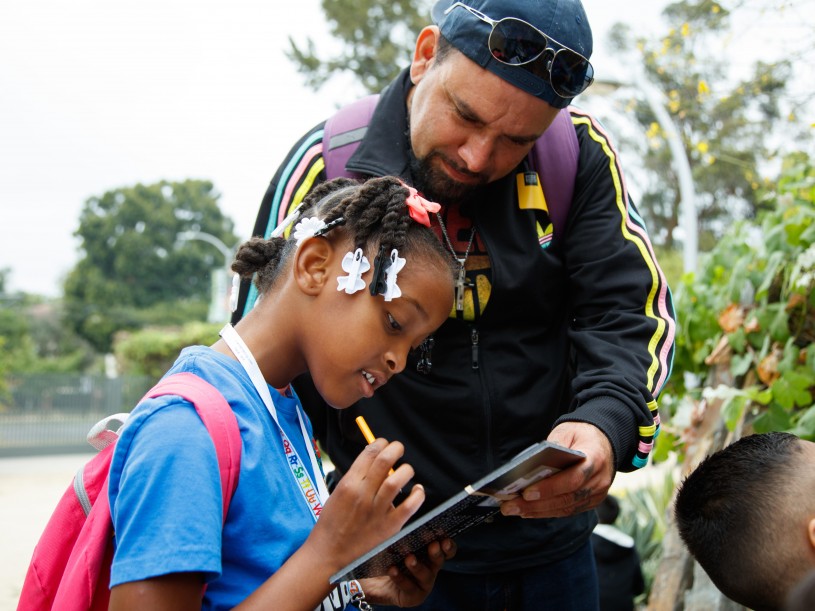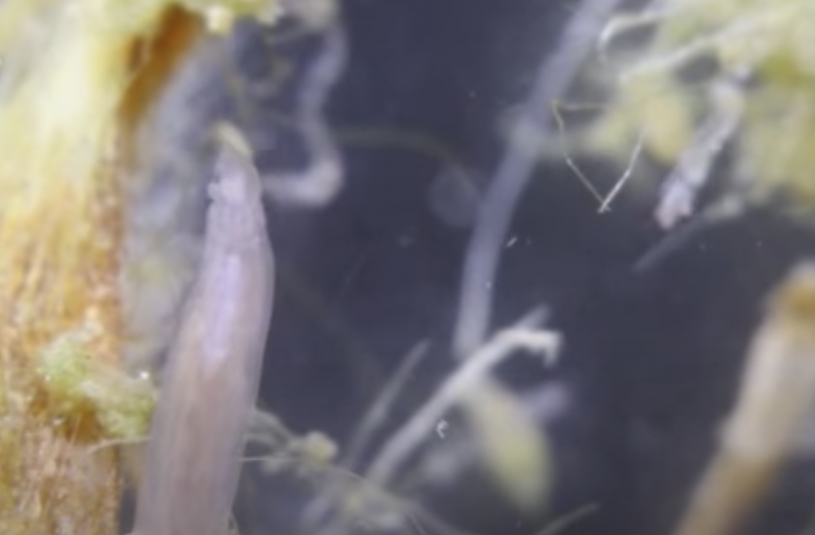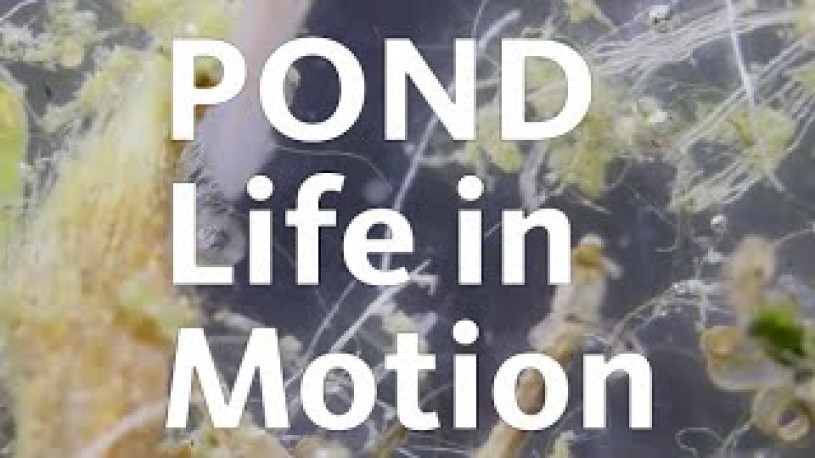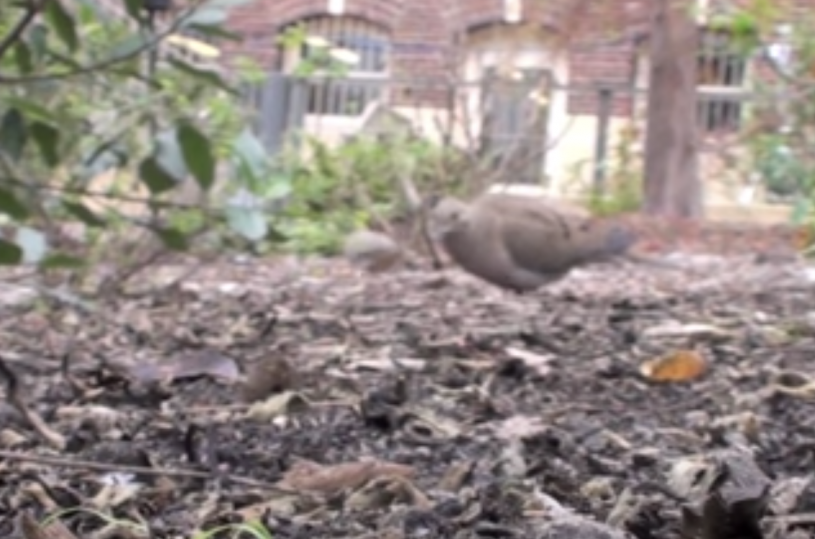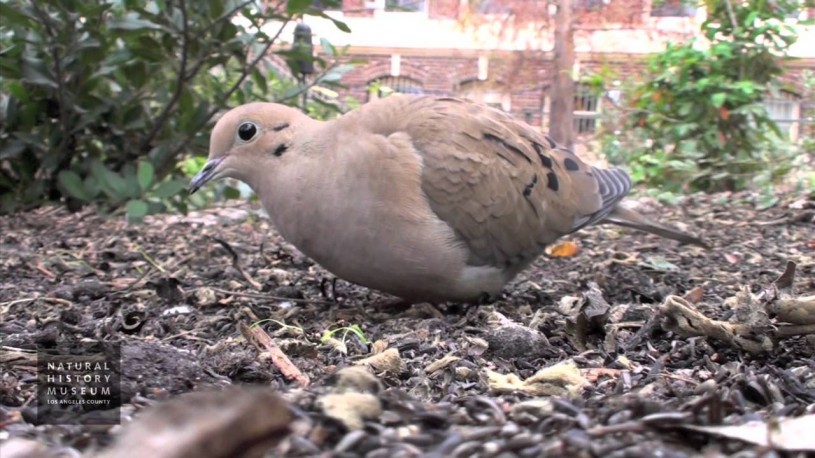NHM Virtual Field Trip
At the Natural History Museum, we study and share stories of the amazing nature in and around Los Angeles in the past, present, and future.
SUGGESTED FOR GRADES 5–12
We’re glad you decided to join us on this virtual field trip! You can explore this content in a few different ways:
- Go through this webpage with your class or teacher
- Participate on your own device at your own pace
TIPS
- Keep a piece of paper and pencil handy to answer prompts and participate in activities
- Use the table of contents links to skip around and start with what interests you
- Click on links for a deeper dive into topics
- If you’re not familiar with some of the words used, definitions for words can be found in the glossary at the end
TABLE OF CONTENTS
- Welcome to the Natural History Museum of L.A. County
- Fossils of Ancient L.A.
- Rocks & Minerals of L.A.
- Telling L.A.'s Nature Stories
- Documenting L.A.'s Nature Today
- The Future of Nature in L.A.
- Field Work
- Glossary
- Standards Alignment
Chapter 1
What is a natural history museum?
The Natural History Museum of Los Angeles County is like a library of life on earth!
Over the last 100 years, scientists at the Natural History Museum have been working to understand and document life on Earth in the past, present, and future. Scientists use our museum collections as a source of evidence to answer their research questions. We have collected 35 million different objects and specimens which help to tell our planet’s story; everything from rocks, to dinosaur fossils, to insects, and so much more.
What do you think we can learn from…
ROCKS?
Rocks and minerals give us information about how L.A. formed millions of years ago. Benitoite, the state gem of California, forms only in areas where tectonic plates crash into each other!
FOSSILS?
Fossils help tell the story of LA's ancient ecosystems and the animals that once lived here! The fossils in our Age of Mammals exhibit are from the Cenozoic Era (up to 65 million years old).
INSECTS?
Studying insects can tell us how Los Angeles—one of the world’s largest cities—affects biodiversity, and how biodiversity in turn affects our city! This cuckoo wasp was photographed as part of NHM’s BioSCAN initiative.
Studying Nature in Los Angeles
Our scientists work to study nature of the past and present from all over the world, but they also study what lives here in Los Angeles today! At the Natural History Museum, we study and share stories of the amazing nature in and around Los Angeles in the past, present, and future.
As we “travel” through the museum today, we’re going to see how we track and document our wild neighbors to better understand L.A.’s biodiversity, including some ways that you can help us!
Chapter 2
Fossils of Ancient L.A.
Fossils provide evidence about L.A.’s ancient nature
The Los Angeles area has not always looked the way it does today - in fact, for most of time, L.A. has been underwater! During the Mesozoic time period, while dinosaurs roamed inland Southern California, Los Angeles was home to fierce marine reptiles.
Let's think like scientists!
Take a look at the sharp, pointy teeth on this marine reptile. Do you think this animal is an herbivore or a carnivore? (Hint: think about the teeth on other animals!) Notice the flippers this animal used to move! Do you think it lived on land or water?
Watch the reconstruction of a mosasaur like this one in this video!
After non-avian dinosaurs went extinct, geologic processes caused the water covering California to recede - but even 15 million years ago Los Angeles remained underwater. This map shows LA's ancient shoreline, along with names of animals who's fossil relatives have been found in Topanga Canyon, Sherman Oaks, North LA and even Orange County!
Museum Spotlight: Dr. Jorge Velez-Juarbe
Jorge Velez-Juarbe is a paleontologist and mammalogist. He studies how and why marine mammals have evolved and become more diverse over time. As Curator of Marine Mammals (both living and extinct!), he works with NHM's mammalogy and vertebrate paleontology collections.
By 2 million years ago, Los Angeles was finally dry land! Some of what lived in L.A. during the Ice Age is still here today, while many species have since gone extinct. The mural below depicts the Ice Age Ecosystem in Los Angeles at that time.

Which of the animals pictured above are familiar? Which have gone extinct? Why do you think some animals survived while others went extinct?
Chapter 2 explore more
- What is a fossil?
- How do paleontologists know where to find fossils?
- Find out more about the dinosaurs of Los Angeles!
- Visit our Age of Mammals exhibit through Google Earth!
- Watch fossil preparator Aisling Farrell on the Curiosity Show!
Chapter 3
Rocks and Minerals of L.A.
Now that we’ve learned about ancient LA and some of the animals that lived here, let’s take a look at the ground we’re standing on!
The rocks and minerals of Los Angeles not only tell us about ancient animals, but geologists also use them to learn about how our modern landscapes came to be. Did you know? There are 3 main types of rock formed by geologic processes: igneous, metamorphic, & sedimentary.
Minerals come in many shapes and sizes, as you can see below! Can you spy a specimen in your favorite color? With pointy edges? Growing in a boxy form?
Museum Spotlight: Dr. AARON CELESTIAN
Aaron Celestian is a geologist and mineralogist who studies how minerals interact with environments and with living things. As Curator of Mineral Sciences, he researches how minerals can be used to solve problems like climate change, pollution, and disease.
Watch the video below for Dr. Aaron Celestian's conversation with Chris Thacker on the Curiosity Show!
Perhaps the most famous mineral from California is gold. Our collections include Southern California gold nuggets collected near LA - in fact, gold was discovered along the San Gabriel River in the 1840s and active mining continued until the 1930s!
Chapter 3 Explore More
- What are the 3 types of rocks?
- Read about the oldest items in our collections: our many meteorites!
- What is forensic mineralogy?
- Learn about Dr. Celestian's research of minerals on Mars.
Chapter 4
Telling L.A.’s Nature Stories
We also document nature by collecting and sharing people’s stories. Next we’ll hear a couple of stories about L.A. nature today!
In our Becoming Los Angeles exhibit, you can view the altar to el Pueblo de Nuestra Señora la Reina de los Ángeles, created by altarista Ofelia Esparza. This colorful altar is an homage to L.A.’s diversity.
Did you Know?
Ofelia Esparza was a cultural consultant on Disney’s Coco!
The Los Angeles River was long thought to be a lifeless concrete channel, but today many Angelenos are taking a closer look and discovering it is a thriving habitat!
Let’s take a closer look at the L.A. River featured on this ofrenda, or altar. Look up, down, and all around. What do you see in the L.A. River?
Birds of the L.A. River
A great egret stands on a rock watching two black-necked stilts. Great egrets can grow to over 3 feet tall with a 5-foot wingspan!
How long is your wingspan? Measure from fingertip to fingertip to find out!
Did you know?
Male birds often have more colorful feathers to attract females.
Museum Spotlight: KIMBALL GARRETT
Ornithologist Kimball L. Garrett is responsible for the care and use of the ornithological collections, adding specimens to those collections, and the associated databases.
An avid birdwatcher since childhood, he has been involved in documenting the avifauna of Los Angeles County and adjacent regions for over forty years. Kimball Garrett is one of many Museum scientists who survey the L.A. River to record the wildlife they see.
Watch the video below for Kimball Garrett’s discussion with Dr. Chris Thacker!
There are many animals that call the L.A. River home. How many animals can you spot in the camera trap footage below?
Place in the World
Imagine an outdoor space you love, find a photo of a space you’d like to explore, or if you have safe access to an outdoor space, sit outside for this activity. This is your “place in the world.” Use your senses to make close observations about your surroundings and record them in a journal.

Make your observations with the instructions above, starting your thoughts with "I notice…" "I wonder…" or "It reminds me of…"
Chapter 4 Explore More
- Learn more about altarista Ofelia Esparza.
- Read about the research that went into making the altar.
- Want to give birding a try? Check out these awesome resources for beginning birders!
- Learn how to do a bird count from the California Academy of Sciences.
- Learn about one of our community partners, Friends of the Los Angeles River, that’s been advocating for the L.A .River since the 1980s.
- Check out this article where Kimball Garrett shares some of the noteworthy bird life found on the river and why it matters.
- Discover artist Leo Limon’s “River Catz” (featured on the altar) and his community work with the L.A. River .
- Check out this Wild L.A. field trip and go on your own river adventure!
Chapter 5
Documenting L.A.’s Nature Today
Our scientists use creative tools to help them understand what nature in L.A. is like today. Next, we’ll find out about a couple of these tools, and what’s been learned from the research scientists have done with them!
Museum Spotlight: Miguel Ordeñana
Miguel Ordeñana is an environmental educator and wildlife biologist. As a community science manager, Miguel creates and promotes community science projects-- including recruiting and training participants! Miguel is currently conducting urban mammal research here in Los Angeles and leads NHMLAC’s Southern California Squirrel Survey.
Watch Miguel's interview with Dr. Chris Thacker below!
Finding Nature in Unexpected Places
Right next to the L.A. River sits Griffith Park. If you have been to the Griffith Observatory, the L.A. Zoo, the Hollywood Sign, the Greek Theater, or the Autry Museum, you’ve been here before!
In 2012, Miguel Ordeñana was co-leading the Griffith Park Connectivity Study, using camera traps (motion-activated cameras) to study whether wide ranging animals were isolated from neighboring open spaces by freeways and major roads.
Did You Know?
Our scientists use camera traps to learn about animals all over the city!
Miguel made a shocking discovery while checking these camera traps: a mountain lion, later named P-22, was living in Griffith Park! “P” stands for puma, and “22” indicates that he was the 22nd mountain lion studied by the National Park Service in the L.A. region. Miguel was the first person to ever see P-22! What do you think he was feeling in the moment when he first saw P-22 on the camera trap? Jot down some of those feelings.
P-22 had taken an amazing journey across two major freeways to get from his birthplace in the western Santa Monica Mountains to Griffith Park— where he now shares eight square miles of parkland with hikers, picnickers, and other park users. After his discovery, P-22 was given a GPS tracking collar so scientists could continue to study him. P-22’s story has helped us learn about the challenges many animals face while trying to survive in the city.
An entire exhibit was created at NHM to share P-22’s story and the similar challenges other pumas face!
Did You Know?
Mountain lions can purr, but can't roar! Click here for rare footage of P-22 vocalizing.
Miguel has also helped us learn about many local bat species! The Backyard Bat Survey uses special recording devices to identify bat species based on the ultrasonic sounds they make using echolocation. He’s discovered bats live all over the city, including, most likely in your neighborhood!
What other types of nocturnal animals do you think live in your neighborhood? How would you go about studying them? What do you want to know about them?
Did You Know?
We’ve detected 5 different species of bats in the Nature Gardens of the Natural History Museum!
Museum Spotlight: Lisa Gonzalez
Lisa Gonzalez helps to oversee NHM’s Entomology collection, which is the largest in Southern California! It includes more than six million specimens of insects, spiders, and other terrestrial arthropods from around the world.
She considers the museum her second home in L.A.: she first started here as a volunteer in 2001 working in the Museum's Insect Zoo.
Learn more about Lisa's museum story below!
Getting to know our insect neighbors
Museum scientists like Lisa Gonzalez are curious about the insects of Los Angeles! They’re surveying (looking for) insects in backyards, community and school gardens, and the Nature Gardens at the Natural History Museum!
The Museum’s BioSCAN project uses special devices, known as Malaise traps, to collect flying insects at sites all over the city. Each insect collected in the traps is sorted and identified. The BioSCAN project is helping us understand which insects live where, and why!
Did you know?
According to Lisa, sphinx moth caterpillars are “like hot dogs for wasps.” Read about them here!
Classifying Insects
Scientists classify, or sort, living things into groups based on their shared characteristics. When animals have something in common with one another, it can be a clue that they are related to each other. The more they have in common, the more closely related they often are. One type of grouping of related species of animals is known as an “order”. Species in the same order share common characteristics, and are also more closely related to one another than species in other orders. In this activity, we’ll explore 6 different orders of insects.
https://nhm.org/classifying-insects
But why study insects?
Because of their small size, insects can survive in a variety of microhabitats. Studying the diversity of insect species in an area can give scientists clues about the overall health of that habitat. Insects also help the world in many ways, including as:
- Pollinators: insects help plants grow, including many of the kinds we like to eat!
- Scavengers/decomposers: insects are nature’s clean-up crew; recycling dead materials into healthy soil.
- A food source for many animals (including people!)
- Providers of materials like honey, wax and silk: people have relied on insects for thousands of years!
- Inspiration for human creativity and culture!
We’ll get to know three of our insect neighbors a little better and write down some observations.

What kinds of insects have you seen in your neighborhood or in your house? Draw one! Imagine what a day in the life of that insect is like and write it down.
Meet Your Neighbors
Fig beetles (Cotinis mutabilis)
What they eat: Adult fig beetles are herbivores, feeding on flower petals, nectar, and soft-skinned fruits (like figs, tomatoes, grapes, etc.)
Where they live: Adults are found where there is plenty of ripe fruit to eat; places like gardens, farms, and parks! Eggs are laid in the soil, and hatch at the beginning of spring.
Fig beetles are known to be clumsy fruit fiends! Ever wonder why they’re so clumsy? Fig beetles follow the smell of food along a “scent path” and sometimes bump into things (even people!) along the way. Beetles have heavy elytra (top wing covers) that also tend to make them bump into things more often than other flying insects.
Praying mantis (Mantis religiosa)
What they eat: Mantises are carnivores, feeding on moths, crickets, grasshoppers, flies, and other insects—sometimes even other mantises!
Where they live: Common in springtime gardens. Normally green or brown, they are well camouflaged in plants.
The praying mantis is a gardener’s friend! They only eat live food, so they are great at gobbling up pests that eat crops. Their good vision, ability to turn their head 180°, and front legs with rows of sharp spines for holding on to prey make them excellent hunters. Many live a year or more-- they can eat a lot of bugs in that time!
Pill Bug (Armadillidium vulgare)
What they eat: Pill bugs are decomposers, and eat mostly dead plants, especially grasses and leaves.
Where they live: Look closely, and you’ll likely find them in your own backyard or neighborhood! Pill bugs prefer moist dark areas, and are often in compost piles, or among soil or fallen leaves.
The Pill bug, also known as “roly polies” or “woodlice”, are not actually insects, but crustaceans (like crabs and shrimp)! Their ability to roll up in a ball provides them with protection. As decomposers, they create healthy soil by recycling dead material.
What make a good habitat for insects?
All animals live in a specific type of habitat. A habitat is another name for an animal’s home, and it provides all the things an animal needs to survive.
What are some things about your home that make it a good place to live? Is there anything you would not be able to survive without?
Similar to people, insects need specific things in their habitats, to help them survive. These needs include:
- Food: The right kind; not all insects eat the same thing!
- Water: Some insects get it from their food, others must drink like we do!
- Shelter: A safe place to hide and sleep.
- Space: Enough to move around, not too overcrowded with other bugs or animals.
The Nature Gardens at NHM were designed to provide a variety of habitats for many different types of insects and other animals! We’ll see if we can spot the ways that the Nature Gardens provide different habitats for insects.
Looking at the image above, consider the following:
Where would an insect find a drink of water? Where would an herbivore (plant-eating) insect find a bite to eat? If you were an insect, where would you choose to make your shelter? Does it look like this habitat provides enough space?
Chapter 5 Explore More
- Bat detectors also come in a pocket size version! Read how Miguel used one when bats made an appearance at a USC Football game.
- School campuses make great study sites! Find out more here.
- You can set up your own track station at home! Click here to find out how.
- What is an insect anyway?
- Not all insects eat the same thing!
- This Insect ID Guide will help you classify any insect you come across!
- More on decomposers like the pill bug!
- Check out this Nature Story about pill bugs in our Nature Gardens.
- Two new pill bugs have recently been discovered in Los Angeles
Chapter 6
The Future of Nature in L.A.
NHM scientists continue to study nature in Los Angeles, and are asking the community to take part!
There’s a lot more to learn about the wildlife sharing L.A. with us...
Where are different species found? Which animals are doing well, and which are suffering? What new species are arriving everyday, and where are they coming from? There’s a new frontier of science right here in our own backyard! Our scientists are hard at work trying to answer these questions, and many more, but they can’t do it alone… community science helps us answer big questions with the help of everyday people! One way community scientists share their observations is through an app called iNaturalist.
Did You Know?
Community scientists are people just like you—they look closely at nature around them and document it for scientists. Hear more about how it works in this video.
Sharing Observations
Community scientists can share their observations using a website/app called iNaturalist. You can use iNaturalist to explore the plants and animals that live around you, learn more about them, and upload your own photos of plants and animals you find! With iNaturalist, you can explore observations made by other community scientists, or make observations of your own through the website or the app. Ask your parent first before making an account if you are interested in adding observations of your own (and are under 18 years old).
We’ll find out more about how NHMLA’s scientists use iNaturalist, and how you can get involved!
NHM Community Science Projects
Explore L.A.’s Nature Map here, then zoom in on your neighborhood to see what people have seen nearby! Conduct your own neighborhood scavenger hunt to see if you can find what plants and animals your neighbors have observed on iNaturalist.
Museum scientists also have specific questions about the animals they study, and they need help answering these questions! You can hear about each project and the real scientist behind it below.
Most scientists have a specific focus for their research. What kinds of animals or plants would you choose to study and why?
Think about what tools you would need to complete your study. Where would your study be located?
Did You Know?
Students can be community scientists, too! Meet a few of them in this video.
Museum Spotlight: Jann Vendetti
Jann Vendetti is a malacologist. She studies the natural history, evolution, systematics, and conservation of marine and land snails — an extremely diverse group of organisms!
Jann uses the Museum collections in her research and also leads the community science project, known as SLIME (or the Snails and Slugs Living in Metropolitan Environments project). This project shows the important role of community science in understanding urban-living biodiversity.
Watch Jann speak with Chris Thacker in the video below!
S.L.I.M.E.
(Snails and Slugs Living in Metropolitan Environments)
S.L.I.M.E. is Jann Vendetti’s community science project, and she needs your observations! Check out the project page on iNaturalist to see other community science observations, and find out how you can participate here.
Did You Know?
Inside the mouth of a snail are thousands of microscopic teeth!
Compare two local snails
What differences do you notice between the milk snail (left) and the Southern California shoulderband (right)? What is similar?
Southern California Squirrel Survey
Mammalogist Miguel Ordeñana doesn’t just study mountain lions and bats; he’s also trying to understand L.A.’s squirrel populations!
See what others have observed, and find out how you can participate here.
Did you Know?
You can conduct a squirrel survey of your own in your backyard or favorite nearby outdoor space!
Compare two local squirrels
What differences do you notice between the Eastern Fox Squirrel (left) and the Western Gray Squirrel (right)? What about them is similar?
RASCals
(Reptiles and Amphibians of Southern California)
NHM’s Herpetologist Greg Pauly is asking for help gathering data in the Reptiles and Amphibians of Southern California, or RASCals Project. Check out what other community scientists have observed on iNaturalist, and find out how to participate here!
Compare two local reptiles
What differences do you notice between the California Desert Tortoise (left) and the Western Pond Turtle (right)? What about them is similar?
Chapter 7
Field Work
In this section, we’ll practice using our observation skills to learn more about nature and try out some field work of our own!
We’ve seen how Museum scientists use field work, or research outside a lab, to learn about nature. Field work is important and requires looking closely and asking questions! Grab your notebook and something to write with, we are going to “visit” the Museum’s Nature Gardens to practice using some of the necessary skills. Copy this Field Journal into your notebook (or print it) to help guide your field work, whether inside or outside.
Did You Know?
Even in professional field work, things still go wrong! Hear from NHM scientists about what happens when field work takes an unexpected turn in this video!
The video below was taken at the Pond in our Nature Gardens. Pay close attention, take notes and sketches, then answer the following questions. Use this pond guide to identify what you see!

What is going on in this habitat? What do you see that makes you say that? How many different species do you observe? What do you notice about the animals’ physical features?
The video below was taken at the Bird Viewing Platform in the Nature Gardens. As you watch it, take a moment to write down what you notice, then answer the questions in the prompt that follows.

What is going on with these doves? What do you see that makes you say that? What do you notice about the doves’ physical features? What do you notice about their behavior?
Chapter 7 Explore More!
- Why do squirrels act so crazy? This video explains some of their most common behaviors!
- What is a reptile?
- Watch one snail’s epic evening journey in this video!
- One local high school class uses NHMLA’s Nature Gardens as a field site. Click here to find out how they do it!
- Click here to learn how to take great nature observation photos.
- Want to see more bird activity? Check out these Live Bird Cams from the Cornell Lab of Ornithology!
GLOSSARY
Chapter 1 Key Terms
Biodiversity
Refers to the variety of life; the number of species in an ecosystem or the entire Earth.
Evidence
A sign which shows that something exists or is true.
Specimens
Samples of natural objects, such as animals, minerals, and rocks, preserved for scientific use, or manmade objects of historic and cultural value. Various uses are: to verify the identity of a (species), to allow study, increase public knowledge of geology, biology, and anthropology.
Tectonic Plates
Earth’s outer crust is broken into pieces, like a cracked egg shell on a hardboiled egg! These pieces are called tectonic plates, and unlike the shell on your egg, they slide over the layer underneath, moving away from and crashing into each other over millions of years.
Taxonomy
The science of naming, describing, and then classifying the living world around us.
CHAPTER 2 KEY TERMS
Avian
Of, relating to, or derived from birds.
Carnivore
An animal that eats meat.
Extinct
No longer in existence, all members of a species have died out.
Fossil
The remains or trace of an organism that lived a long time ago.
Geologic processes
Naturally occurring events that shape our world, such as:
Volcanism: Eruption of molten rock (magma) onto the surface of the planet. A volcano is the vent through which magma and gases are discharged. (Fun fact: magma that reaches the surface is called lava!)
Tectonics: Earth's outer shell is divided into several plates that glide over the mantle, the superheated layer of rock that lies between Earth’s crust and core. The slow, steady movement of these plates over millions of years is called tectonics.
Erosion: Water, wind, and other natural forces that cause rocks and earth to wear away. These forces also move bits of rock and earth to new places. This movement changes the shape of the land.
Herbivore
An animal that eats plants.
Mammal
An animal that breathes air, has a backbone, and grows hair at some point during its life. In addition, all female mammals have glands that can produce milk.
Paleontologist
A scientist who studies fossils to understand the history of life on Earth.
Reptile
A cold-blooded animal (such as snakes, lizards, turtles, or alligators) that breathes air and usually has the skin covered with scales or bony plates.
Chapter 3 Key Terms
Gem
A piece of mineral crystal, which is cut and polished to make jewelry or other adornments.
Geologist
A scientist who studies rocks to understand the Earth’s structure, composition, and history.
Mineral
Naturally occurring solid, crystalline substances that are formed through geologic process.
Mineralogist
A scientist who studies minerals.
Rock
Can consist of a single mineral or of several minerals that are tightly compacted or held together by a cementlike mineral matrix. The three main types of rock are as follows:
Igneous: Formed by the cooling and solidification of magma or lava.
Sedimentary: Formed from broken pieces of other rocks, or sediment.
Metamorphic: Formed by the transformation of other rocks under intense heat and pressure.
Chapter 4 Key Terms
Altar
A table or place which serves as a center of worship or ritual. Mexican altares are installations consisting of artifacts, mementos, photographs, prefabricated objects, flowers, santos (saints), and candles to create a sacred place either within a home or on public display for special feast days of the church.
Avifauna
The birds of a particular region, habitat, or geological period.
Camera Trap
A camera trap is a remotely activated camera that is equipped with a motion sensor or an infrared sensor, or uses a light beam as a trigger. Camera trapping is a method for capturing wild animals on film when researchers are not present, and has been used in ecological research for decades.
Cultural consultant
A community leader with extensive knowledge of their own culture and how services can best be delivered to meet the needs of their community.
Habitat
The natural home or environment of an animal, plant, or other organism.
Ornithologist
A person who studies or is an expert on birds.
Survey
To look over and examine closely; to gather information from or about.
Chapter 5 Key Terms
Crustacean
A type of invertebrate animal (no backbone!) with a segmented body, hard exoskeleton, and many pairs of limbs; examples of crustaceans are crabs, lobsters, and shrimp.
Decomposer
A living organism (as a bacterium, fungus, or insect) that feeds on and breaks down plant and animal matter into simpler parts.
Entomologist
A scientist that studies insects.
Exoskeleton
A hard covering that supports and protects the bodies of some types of animals. The word exoskeleton means “outside skeleton.” Many invertebrates, or animals without backbones, have exoskeletons.
Habitat
The home of an animal or a plant. Almost every place on Earth—from the hottest desert to the coldest ice pack—is a habitat for some kinds of animals and plants. Most habitats include a community of animals and plants.
Microhabitat
A limited or smaller habitat with differing properties from its surrounding or more extensive habitat.
Metamorphosis
The process of transformation in an insect or amphibian from an immature form to an adult form.
Nocturnal
Active at night.
Chapter 6 Key Terms
Community Science
Community science (sometimes called citizen science) has volunteers work alongside scientists to help answer questions about the world. You can think of it like crowdsourcing data collection!
Herpetologist
A scientist that studies the evolution, behavior, and biology of reptiles and amphibians
Mammalogist
A scientist that studies the evolution, behavior, and biology of mammals
Malacologist
A scientist that studies mollusks, such as slugs and snails
Standards
Next Generation Science Standards
Disciplinary Core Ideas: ESS1.C, ESS3.C, LS1.D, LS2.A, LS2.B, LS2.C, LS4.A,
3-5: ESS1.C, ESS2.B, ESS2.D, ESS2.E, ESS3.B, ESS3.C, LS1.B, LS1.D, LS2.A, LS2.B, LS2.C, LS3.B, LS4.A, LS4.C, LS4.D
MS: ESS1.C, ESS2.B, ESS3.C
HS: ESS1.C,
Science & Engineering Practices: 1,3,4,7,8
Cross-Cutting Concepts: 1, 2, 6
Common Core State Standards
English Language Arts: 3-5: RI.3-5.4, RI.3.5,
